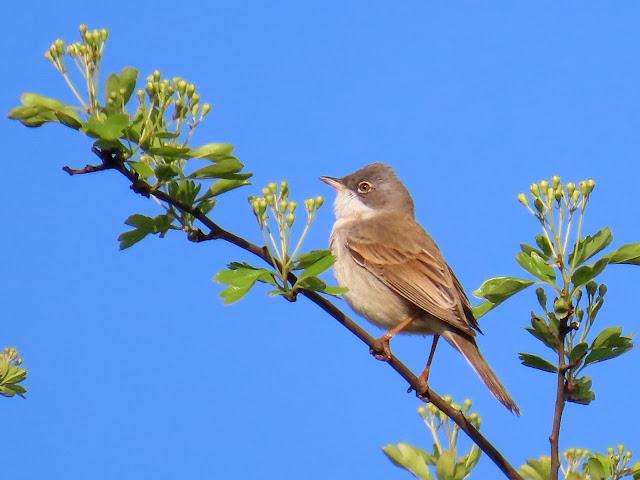The scratchy phrase of a singing Whitethroat, with the tone of an aggressive question, is one of the harbingers of summer. This warbler of brown and grey tones, with a bright white throat and eye ring, and warmer brown wings. When singing, males lift their crown and puff their throats, together with its long tail it gives the impression of a slim bird with a large head. They sing from prominent perches, and can jump into a display flight in song. Characteristic raspy, repeated alarm call, when disturbed. It lives in hedgerows, ditch and river banks and scrubby, open areas.
Whitethroats are common summer migrants. In the city, any scrubby patch will hold a pair. They arrive in the second half of April and quickly settle in their territories. By mid June they will have a batch of fledglings and start a second brood. There are pairs at Sculcoates, along the Barmston Drain, many pairs at Noddle Hill, MKM railway triangle, and on the outskirts of the city. They leave by the end of September.
BTO Birdfacts. Whitethroat.


.JPG)



No comments:
Post a Comment